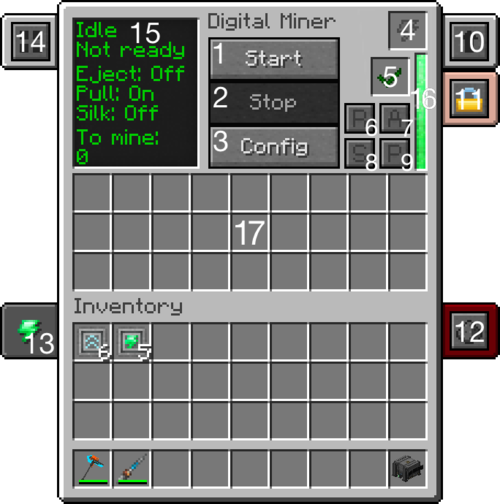How To Use A Digital Miner

The digital miner, a sophisticated piece of technology, has become increasingly prevalent in various industries, from resource extraction to construction. Understanding its operation is crucial for professionals seeking efficiency and precision in their work. This article provides a comprehensive guide on how to effectively utilize a digital miner.
This guide explains the key components, setup procedures, and operational techniques necessary for maximizing the digital miner's potential. It caters to both novice users and experienced professionals looking to refine their skills. Mastering the digital miner can lead to optimized resource acquisition, reduced operational costs, and enhanced overall productivity.
Understanding the Digital Miner's Components
The digital miner is composed of several key components working in synergy. These include the central processing unit (CPU), the laser scanning system, the material extraction mechanism, and the control interface.
The CPU is the brain of the system, processing data from the sensors and controlling the other components. The laser scanning system maps the terrain and identifies valuable resources.
The extraction mechanism physically removes the desired material, and the control interface allows the operator to manage and monitor the entire process.
Setting Up the Digital Miner
Proper setup is crucial for ensuring optimal performance and preventing damage to the equipment. This process involves physical placement, power connection, and initial calibration.
First, carefully position the digital miner in the designated area, ensuring stability and accessibility. Then, connect it to a reliable power source adhering to the manufacturer's specifications.
Finally, perform the initial calibration using the provided software, following the on-screen instructions meticulously.
Configuring the Software Interface
The software interface is where users define mining parameters and monitor the operation. Navigating and configuring this interface effectively is essential for achieving desired outcomes.
Start by defining the target area using the laser scanning system. Then, specify the target resource, such as a specific mineral or type of soil.
Adjust parameters like extraction depth, speed, and efficiency to match the specific requirements of the project.
Operational Techniques for Maximizing Efficiency
Several operational techniques can significantly enhance the efficiency and effectiveness of the digital miner. This includes optimizing scanning patterns, adjusting extraction parameters, and implementing real-time monitoring.
Optimize scanning patterns to cover the entire target area, minimizing blind spots and maximizing resource detection. Adjust extraction parameters, such as speed and power, to match the hardness and density of the material being extracted.
Implement real-time monitoring to track performance metrics, identify potential problems, and make necessary adjustments on the fly.
Safety Considerations When Operating a Digital Miner
Operating a digital miner involves certain safety risks that must be addressed to prevent accidents and injuries. It is crucial to follow safety protocols and wear appropriate protective gear.
Always wear safety goggles and a hard hat when working near the digital miner. Ensure that the surrounding area is clear of obstacles and personnel before starting the machine.
Regularly inspect the equipment for signs of wear and tear, and address any issues promptly to prevent malfunctions. Furthermore, it is important to be aware of the manufacturer's safety guidelines and local regulations, especially those pertaining to noise levels, dust emissions, and environmental impact. Consult with safety experts before operation.
Troubleshooting Common Issues
Even with proper setup and operation, common issues can arise. Knowing how to troubleshoot these problems can minimize downtime and maintain productivity.
If the laser scanning system malfunctions, check the sensor connections and ensure that the lenses are clean. If the extraction mechanism jams, carefully clear the obstruction, following the manufacturer's instructions.
If the software interface freezes, restart the program and, if necessary, reinstall the software.
The Future of Digital Mining
The field of digital mining is constantly evolving, with new technologies and techniques emerging regularly. Staying abreast of these advancements is crucial for maintaining a competitive edge.
Expect to see continued improvements in automation, data analytics, and resource extraction efficiency. Integration with other technologies, such as artificial intelligence (AI) and machine learning (ML), will further enhance the capabilities of digital miners. These technologies will improve decision-making and autonomous operation.
For instance, companies such as Caterpillar and Komatsu are already investing heavily in the development of autonomous mining solutions, showcasing the growing importance of this technology. Furthermore, governments and regulatory bodies are increasingly focusing on sustainable mining practices.
This highlights the need for digital mining solutions that minimize environmental impact. Staying informed about these trends will help users adapt and optimize their operations for the future.
Conclusion
The digital miner represents a significant advancement in resource extraction and construction. By understanding its components, setting it up correctly, mastering the software interface, and implementing best practices, users can unlock its full potential.
Remember to prioritize safety, troubleshoot common issues effectively, and stay informed about the latest developments in the field. Mastering the digital miner is not just about operating a machine, it's about driving efficiency, innovation, and sustainability in the industries it serves. These factors will improve productivity.
Continuous learning and adaptation are key to maximizing the benefits of this transformative technology. By taking these steps, you can leverage the digital miner to achieve optimal results and contribute to the future of your industry.


















